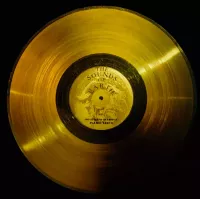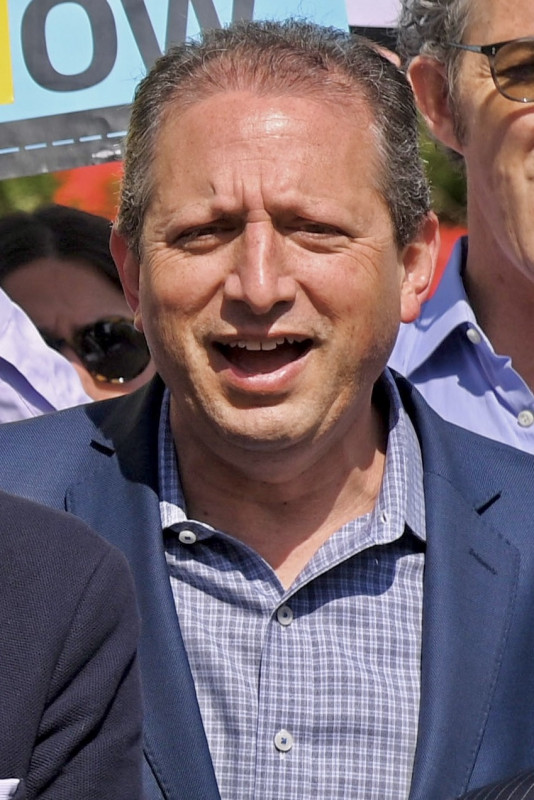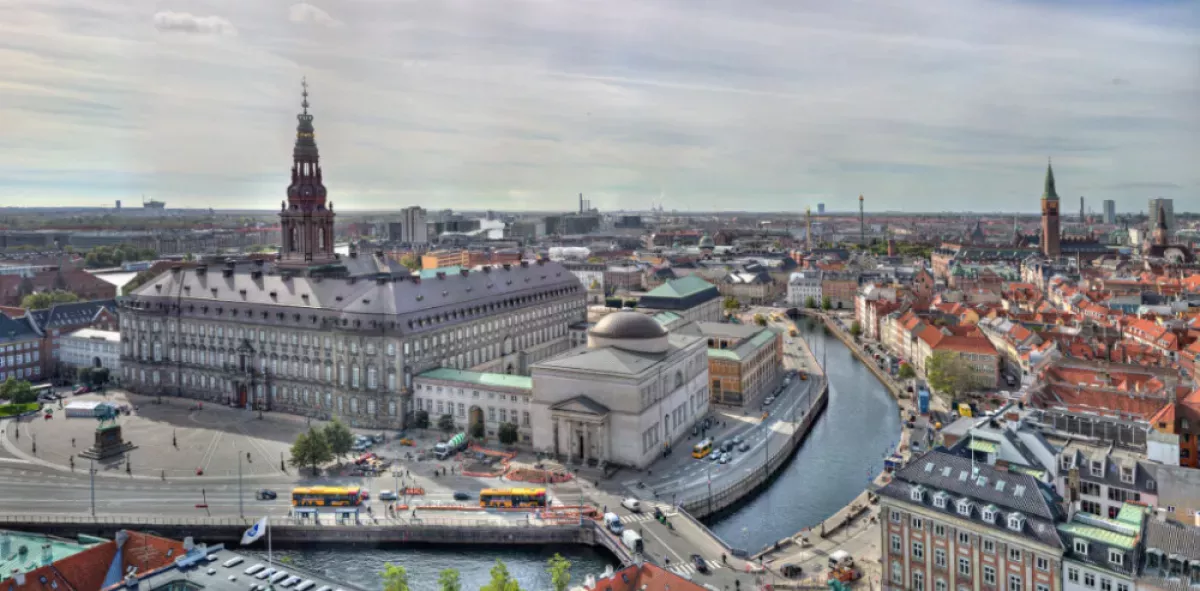Copenhagen, the capital of Denmark, boasts a population of around 660,000 within its municipality and 1.4 million in its urban expanse. Situated on the islands of Zealand and Amager, the city shares a border with Malmö, Sweden, across the Øresund strait. A notable infrastructure feat, the Øresund Bridge, links these two cities via rail and road networks.
1901: Copenhagen Population Reaches 400,000
By 1901, the population of Copenhagen grew to approximately 400,000 inhabitants.
1901: Incorporation of Amager and Valby
The northern part of Amager and Valby were incorporated into the City of Copenhagen in 1901-02.
1903: Frederiks Hospital Becomes State-Owned
Frederiks Hospital, which began operating in March 1757, became state-owned in 1903 and was renamed Rigshospitalet.
1906: Establishment of Nordisk Film
Nordisk Film, the oldest continuously operating film production company in the world, was established in Valby, Copenhagen in 1906.
1908: Det Ny Teater Opens
Det Ny Teater (the New Theatre) was completed in 1908.
1908: Gefion Fountain Completion
The Gefion Fountain, designed by Anders Bundgaard and illustrating a Nordic legend, was completed in 1908 near the southeast corner of Kastellet.
1913: Construction of Bispebjerg Hospital
Bispebjerg Hospital, serving approximately 400,000 people in the Greater Copenhagen area, was built in 1913.
1913: The Little Mermaid Statue Unveiling
Inspired by Hans Christian Andersen's fairy tale, the Little Mermaid statue was created by Edvard Eriksen and unveiled in 1913. It is located in the waterfront of Østerbro district.
1915: Rutschebanen Rollercoaster Opens
Tivoli Gardens opened Rutschebanen, the world's oldest operating rollercoaster, in 1915.
1918: Construction Begins on Politigården
Construction of the Politigården building, designed in a Neoclassical style by architects Hack Kampmann and Holger Alfred Jacobsen, commenced in 1918.
1920: Expansion of Residential Neighborhoods
From 1920 to 1960, outlying areas such as Kongens Enghave, Valby, Vigerslev, Vanløse, Brønshøj, Utterslev, and Sundby were developed, primarily with residential housing and apartments.
1924: Politigården Building Completed
The Politigården building, which houses the Danish National Police and Copenhagen Police headquarters, was completed in 1924.
1925: Opening of Copenhagen Airport
Copenhagen Airport, Scandinavia's largest airport, opened in Kastrup on the island of Amager in 1925.
1927: Opening of Gentofte Hospital
Gentofte Hospital opened in 1927.
1934: Paul Gustav Fischer's Death
Paul Gustav Fischer, a prolific painter who frequently depicted scenes of Copenhagen, died in 1934.
April 1940: German Occupation Begins
Copenhagen was occupied by German troops from 9 April 1940, marking the beginning of occupation during World War II.
1940: Grundtvig's Church Completion
Designed by P.V. Jensen Klint, the Expressionist-style Grundtvig's Church in Bispebjerg was completed in 1940, its west façade resembling a church organ.
1941: Bohr and Heisenberg Meeting
Physicists Niels Bohr and Werner Heisenberg met in Copenhagen in 1941, an event later dramatized in Michael Frayn's play "Copenhagen".
August 1943: Resistance and Arrests
In August 1943, the Danish government's collaboration with the Nazi occupation forces collapsed. The Royal Danish Navy sunk several ships in Copenhagen Harbor to prevent their use by the Germans, and the Nazis began arresting Jews.
1943: Tivoli Gardens Ferris Wheel Opens
The oldest operating ferris wheel began operation at Tivoli Gardens in 1943.
March 1945: Operation Carthage
On March 22, 1945, the British Royal Air Force, in an operation known as "Operation Carthage," attacked the Sicherheitsdienst and Gestapo building in Copenhagen. While the attack successfully destroyed Gestapo archives, a plane crash led to the deaths of 123 civilians.
May 1945: Liberation from German Occupation
Copenhagen was liberated from German occupation on 4 May 1945.
May 1945: Official Liberation of Copenhagen
On 8 May 1945, Copenhagen was officially liberated by British troops under the command of Field Marshal Bernard Montgomery.
1945: Planning of "Operation Carthage"
In 1945, Ole Lippman, leader of the Danish section of the Special Operations Executive, invited the British Royal Air Force to assist in their operations against Nazi headquarters in Copenhagen. Air Vice-Marshal Sir Basil Embry planned a precision attack on the Sicherheitsdienst and Gestapo building.
1947: Finger Plan Introduced
An innovative urban development project known as the Finger Plan was introduced in 1947, aiming to create new housing and businesses interspersed with green areas.
1956: Radisson Blu Royal Hotel Construction Begins
Construction of the Radisson Blu Royal Hotel, designed by Arne Jacobsen for Scandinavian Airlines System (SAS), began in 1956.
1956: UCI Road World Championships
Copenhagen first hosted the UCI Road World Championships in 1956.
1960: Completion of Outlying Neighborhood Development
By 1960, the development of outlying residential neighborhoods in Copenhagen, which began in 1920, was largely completed.
1960: Radisson Blu Royal Hotel Completion
The Radisson Blu Royal Hotel was completed in 1960, becoming the tallest hotel in Denmark at the time.
1964: Strøget Pedestrianization
Strøget, one of the world's oldest and longest pedestrian streets, was closed to traffic in 1964.
1969: Radisson Blu Royal Hotel No Longer the Tallest
The Radisson Blu Royal Hotel, Copenhagen's only skyscraper until 1969, was surpassed in height by another building.
1970: Opening of Hvidovre Hospital
Hvidovre Hospital opened in 1970.
September 1971: Establishment of Freetown Christiania
In September 1971, following student unrest, the former Bådsmandsstræde Barracks in Christianshavn was occupied, leading to the establishment of Freetown Christiania.
1971: Freetown Christiania Occupation
During student unrest in 1971, squatters occupied an area that became known as Freetown Christiania.
1972: Replacement of Trams with Buses
Motor traffic in Copenhagen grew significantly, leading to the replacement of trams with buses in 1972.
August 1973: Oral Literature Conference
An oral literature conference, part of the 9th International Congress of Anthropological and Ethnological Sciences, was held in Copenhagen from August 15-18, 1973.
1976: Opening of Herlev Hospital
Herlev Hospital opened in 1976.
1980: Establishment of Copenhagen Marathon
Copenhagen's annual marathon event, the Copenhagen Marathon, was established in 1980.
1980: Copenhagen Marathon Established
The annual Copenhagen Marathon was established in 1980.
1982: "The Copenhagen Connection" Publication
"The Copenhagen Connection", a novel set in Copenhagen, was published in 1982.
1982: First Copenhagen Carnival
Copenhagen Carnival, featuring music, dance, and festivities, debuted in 1982, becoming an annual tradition during the Whitsun Holiday.
1989: "Number the Stars" Publication
Lois Lowry's "Number the Stars", a novel set in Copenhagen, was published in 1989.
1989: First Copenhagen Photomarathon
The first photomarathon photography competition was held in Copenhagen in 1989, marking the beginning of an annual event.
1990: Copenhagen Port Resurgence
Following a merger with Malmö harbour in 1990, the Copenhagen Port experienced a resurgence after decades of stagnation.
1992: Formation of FC København
In 1992, FC København was formed as a merger between two older Copenhagen clubs, B 1903 and KB.
1992: Merger of Nordisk Film and Egmont Media Group
In 1992, Nordisk Film merged with the Egmont media group.
1992: "Miss Smilla's Feeling for Snow" Publication
Peter Høeg's "Miss Smilla's Feeling for Snow", a novel set in Copenhagen, was published in 1992.
1993: "Borderliners" Publication
"Borderliners", a novel by Peter Høeg set in Copenhagen, was published in 1993.
1994: Det Ny Teater Reopens as a Musical Venue
Det Ny Teater reopened as a popular venue for musicals in 1994 after its closure.
1997: Opening of Amager Hospital
Amager Hospital opened in 1997.
1998: "Copenhagen" Play Premiere
Michael Frayn's play "Copenhagen", about a meeting between physicists Niels Bohr and Werner Heisenberg in 1941, premiered in 1998.
1999: "Music and Silence" Publication
Rose Tremain's "Music and Silence", a novel set in Copenhagen, was published in 1999.
1999: Black Diamond Completion
The Black Diamond, an extension to the Royal Danish Library, was completed in 1999 on the Copenhagen waterfront.
2000: "The Danish Girl" Publication
David Ebershoff's "The Danish Girl", a novel set in Copenhagen, was published in 2000.
2000: Opening of the Øresund Bridge
In the summer of 2000, the Øresund Bridge, connecting Copenhagen and Malmö in Sweden, opened to rail and road traffic.
2001: "Sharpe's Prey" Publication
"Sharpe's Prey" by Bernard Cornwell, a novel set in Copenhagen, was published in 2001.
2001: Middelgrunden Offshore Wind Farm Opens
A large offshore wind farm began operation at Middelgrunden, just off the coast of Copenhagen, in 2001, contributing about 4% of the city's energy.
2002: Copenhagen Metro Expansion Begins
The Copenhagen Metro, a railway system, began operations in 2002 and continued to expand until 2007.
2002: Copenhagen Metro Launch
The Copenhagen Metro, which serves central Copenhagen, launched in 2002.
2004: Copenhagen Opera House Opens
The Copenhagen Opera House, a gift to the city from the A.P. Møller foundation, was completed and opened in 2004.
2005: Copenhagen Opera House Opening
Among the world's most modern opera houses, the Copenhagen Opera House, designed by Henning Larsen, opened in 2005.
2005: Amager Strandpark Opening
In 2005, Amager Strandpark, a 2 km long artificial island with 4.6 km of beaches, opened just a short distance from Copenhagen's city centre.
2006: Economic Growth in Copenhagen
Between 2006 and 2011, Copenhagen experienced a 2.5% economic growth, contrasting with a 4% decline in the rest of Denmark.
2006: Consolidation of DR Activities
DR, the major Danish public service broadcasting corporation, began consolidating its activities in a new headquarters, DR Byen, in 2006.
2006: First Festival of Endless Gratitude
The Festival of Endless Gratitude (FOEG), celebrating indie counterculture, experimental pop music, and visual arts, first took place in Copenhagen in September 2006.
2007: Completion of Copenhagen Metro Expansion
By 2007, the expansion of the Copenhagen Metro railway system, which began in 2002, was completed.
2007: Completion of DR Byen
DR completed the consolidation of its activities in its new headquarters, DR Byen, in 2007.
2008: World's Best Design City
The British design magazine Monocle named Copenhagen the World's best design city in 2008.
January 2009: Copenhagen Concert Hall Opening
Designed by Jean Nouvel, the Copenhagen Concert Hall, one of the most expensive ever built, opened in January 2009, home to the Danish National Symphony Orchestra.
December 2009: COP15 Climate Summit
Copenhagen gained international attention in December 2009 when it hosted COP15, the worldwide climate meeting.
2009: Establishment of CPH:PIX
CPH:PIX, Copenhagen's international feature film festival, was established in 2009 through the merger of the NatFilm Festival and CIFF.
2009: Tourism Boom Begins
Copenhagen began to experience a boom in tourism, becoming one of the fastest-growing metropolitan destinations in Europe from 2009 onwards.
2009: Round Christiansborg Open Water Swim Race
In 2009, the annual Round Christiansborg Open Water Swim Race, a 2-kilometer open water swimming competition, incorporated a 10-kilometer FINA World Cup competition.
2010: City Break Tourism Success
City break tourism contributed an estimated DKK 2 billion in turnover in 2010, an exceptional year with a 29% increase.
2010: First Copenhell Festival
Copenhell, a heavy metal rock music festival, held its first edition at the former B&W Shipyard in Refshaleøen in 2010.
2010: Noma Ranked Best Restaurant in the World
Noma, a Copenhagen restaurant specializing in New Nordic Cuisine, earned the title of Best Restaurant in the World by Restaurant magazine in 2010.
2010: Employment Statistics for Copenhagen
Statistics from 2010 revealed that the majority of Copenhagen's 350,000 workers were employed in the service sector, particularly in transport, communications, trade, and finance.
September 2011: UCI Road World Championships
Taking advantage of its bicycle-friendly infrastructure, Copenhagen hosted the 2011 UCI Road World Championships in September 2011. This marked the second time Denmark hosted the event, the first being in 1956.
2011: End of Copenhagen's Economic Growth Period
Copenhagen's economic growth period, which started in 2006, ended in 2011.
2011: Noma's Second Consecutive Win
Noma retained its title as Best Restaurant in the World in 2011, further fueling global interest in New Nordic Cuisine.
2011: Copenhagen Metro Ridership Reaches 54 Million
The Copenhagen Metro transported approximately 54 million passengers by 2011.
2012: Copenhagen's Student Friendliness Ranking
Despite high rankings for quality of living, Copenhagen ranked 39th for student friendliness in 2012 due to low scores in employer activity and affordability.
2012: Noma's Third Win
For the third year running, Noma was crowned Best Restaurant in the World in 2012, cementing its place in the culinary world.
2012: Cruise Ship Arrivals at Copenhagen Harbour
In 2012, Copenhagen Harbour handled 372 cruise ships and 840,000 passengers.
2012: CMP Performance
In 2012, Copenhagen Malmö Port (CMP) handled about 148,000 TEU and received approximately 8,000 ships.
2012: High Percentage of Cyclists in Copenhagen
In 2012, approximately 36% of Copenhagen's working or studying population commuted by bicycle, covering a combined distance of 1.27 million kilometers every working day.
March 2013: The Blue Planet Aquarium Opening
The Blue Planet, Denmark's national aquarium, opened in March 2013 in Kastrup. With 53 aquariums, it is the largest in Scandinavia.
October 2013: Record Passenger Numbers at Copenhagen Airport
Copenhagen Airport saw a record month in October 2013 with 2.2 million passengers.
November 2013: Increasing Passenger Numbers at Copenhagen Airport
Figures from November 2013 showed that passenger numbers at Copenhagen Airport were increasing by about 3% annually, significantly higher than the European average.
2013: Tourism Growth
Copenhagen saw a 42% growth in international bed nights from 2009 to 2013, with the total number of bed nights in the Capital Region exceeding 9 million.
2013: Dansk Industri's Employment Survey
In 2013, Dansk Industri conducted a survey which showed that Copenhagen ranked first in educational qualifications and private company development but eighty-sixth in the employment climate from the perspective of local companies.
2013: Copenhagen Ranked "Most Liveable City"
Monocle magazine named Copenhagen the "most liveable city" in 2013, citing its open spaces, pedestrian- and cyclist-friendly infrastructure, and emphasis on community and culture.
2013: Technical University of Denmark Recognition
The Technical University of Denmark in Lyngby earned recognition as a leading technical university in Northern Europe in 2013.
2014: Copenhagen's Michelin Star Rise
By 2014, Copenhagen boasted 15 Michelin-starred restaurants, solidifying its reputation as a gourmet destination in Scandinavia.
2014: Copenhagen Tops Green City Rankings
Copenhagen was ranked as the top green city for the second time in the 2014 Global Green Economy Index (GGEI) for its commitment to high environmental standards.
2014: Grand Mosque of Copenhagen Opens
The Grand Mosque of Copenhagen, Denmark's first mosque, opened in 2014, reflecting the increasing religious diversity in the city.
2015: Park Accessibility Goal
Copenhagen had a municipal policy aiming to provide all citizens with access to a park or beach within a 15-minute walk by 2015.
2015: Copenhagen Ranked as Bicycle-Friendly City
Copenhagen has consistently been ranked as one of the most bicycle-friendly cities in the world since 2015, with bicycles outnumbering its inhabitants.
2015: Cruise Passengers
In 2015, 680,000 cruise passengers visited the port of Copenhagen.
January 2016: Copenhagen Urban Area Population
As of January 1, 2016, Statistics Denmark reported a population of 1,280,371 for the Copenhagen urban area, which includes the municipalities of Copenhagen and Frederiksberg, as well as parts of 16 other municipalities.
December 2016: Population Statistics for Copenhagen
In December 2016, Statistics Denmark reported a combined population of 763,908 for the City of Copenhagen, which includes the Municipality of Copenhagen and the adjacent municipalities of Dragør, Frederiksberg, and Tårnby.
2016: University of Copenhagen Ranking
The University of Copenhagen, founded in 1479, was ranked 30th in the world by the Academic Ranking of World Universities in 2016.
2017: Capital Region of Denmark GDP
In 2017, the Capital Region of Denmark, which includes Copenhagen, recorded a gross domestic product (GDP) of €120 billion, ranking it 15th highest in GDP per capita among European Union regions.
September 2019: Opening of the City Circle Line (M3)
The Copenhagen Metro expanded significantly with the opening of the City Circle Line (M3) on September 29, 2019, connecting all inner boroughs of the city.
2019: Lonely Planet Recognition
Copenhagen was ranked first among Lonely Planet's top ten cities to visit in 2019.
2019: Religious Affiliation in Copenhagen
In 2019, 56.9% of Copenhagen's population were members of the Lutheran Church of Denmark, a slight decrease from the previous year.
March 2020: Opening of the Nordhavn Extension (M4)
The 2.2 km Nordhavn extension of the Harbour Line (M4) opened on March 28, 2020, running from Copenhagen Central Station to Østerport.
2020: Near Net-Zero Energy Buildings Mandate
In 2020, Copenhagen mandated that new buildings be constructed according to near net-zero energy standards.
August 2021: Øresund Region Population
As of August 2021, the Øresund Region, encompassing parts of Denmark and Sweden, had a population of 4.1 million, with 2.7 million residing in the Danish part.
October 2021: European Capital of Smart Tourism Shortlist
Copenhagen was shortlisted for the European Commission's 2022 European Capital of Smart Tourism award in October 2021.
July 2022: Field's Mall Shooting
On 3 July 2022, a shooting at Field's mall in Copenhagen resulted in the death of three people. Police arrested a 22-year-old man and have not ruled out terrorism as a motive.
2022: Population by Origin Background Data
Data on Copenhagen's population by origin background was collected in 2022.
2024: Expected Opening of the M4 Sydhavn Branch
The M4 Sydhavn branch is expected to open in 2024 as part of Copenhagen's strategy to promote sustainable transport.
2025: Copenhagen's Carbon Neutrality Goal
Copenhagen aims to achieve carbon neutrality by 2025 through various initiatives such as reducing electricity and heat consumption, promoting renewable energy, and transitioning to carbon-neutral district heating.
Mentioned in this timeline
Germany officially the Federal Republic of Germany is a Western...
Iraq officially the Republic of Iraq is a West Asian...

Hans Christian Andersen's The Little Mermaid tells the story of...
Pakistan officially the Islamic Republic of Pakistan is a South...

Music is a cultural universal involving the arrangement of sound...
Turkey officially the Republic of T rkiye is a transcontinental...
Trending

7 months ago Lewis Pullman's Sentry costume revealed for 'Thunderbolts' in exclusive first look and interviews.

6 months ago Kate Winslet Discusses Career on 60 Minutes; Pompeo Cut from Film
5 days ago Ranking the Worst Christmas Songs and Exploring Overrated, Underrated Holiday Music

5 months ago NJ Transit Bus Driver Charged After Crash Injuring Roseland Police Officer Critically.

6 months ago NYC Comptroller Brad Lander Arrested at ICE Court Hearing: Details and Reactions

6 months ago Musk Apologizes to Trump After Susie Wiles and JD Vance Intervene.
Popular
Matt and Ross Duffer known as the Duffer Brothers are...

Candace Owens is an American conservative political commentator and author...

XXXTentacion born Jahseh Dwayne Ricardo Onfroy was a controversial yet...

Ilhan Omar is an American politician currently serving as the...

Tom Cotton is an American politician and Army veteran currently...
The Kennedy Center Honors are annual awards recognizing individuals and...
